A ring angled isosceles prism KLM of refractive index n1 is placed inside a rectangular block PQRS of refractive index n2 as shown in the adjoining Fig. The rectangular box is surrounded by a medium of refractive index n3. A ray of light AB enters the rectangular block normally. Depending upon the relationships between n1,n2andn3. it takes one of the four possible paths.
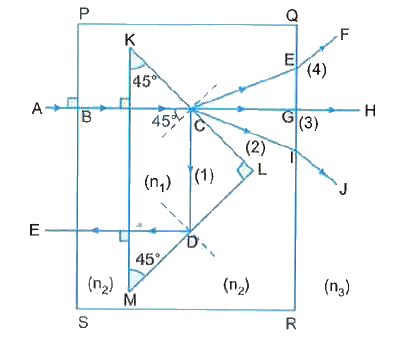
What is the condition for light ray to proceed along the path no. 4 (i.e., path ABCEF)?
The ray no. 4 bends towards normal while undergoing refraction at C. So we conclude that n2>n1. However, while undergoing refraction at E the ray bends away from the normal.
Hence n3<n2. So this situation is possible only if n2>n1andn2>n3.
Topper's Solved these Questions
- RAY OPTICS AND OPTICAL INSTRUMENTSBOOK - U-LIKE SERIESCHAPTER - RAY OPTICS AND OPTICAL INSTRUMENTSEXERCISE - MULTIPLE CHOICE QUESTIONS
39 Videos
- RAY OPTICS AND OPTICAL INSTRUMENTSBOOK - U-LIKE SERIESCHAPTER - RAY OPTICS AND OPTICAL INSTRUMENTSEXERCISE - FILL IN THE BLANKS
20 Videos
- RAY OPTICS AND OPTICAL INSTRUMENTSBOOK - U-LIKE SERIESCHAPTER - RAY OPTICS AND OPTICAL INSTRUMENTSEXERCISE - SELF ASSESSMENT TEST (SECTION B)
3 Videos
- NUCLEIBOOK - U-LIKE SERIESCHAPTER - NUCLEIEXERCISE - Self Assessment Test
10 Videos
- SEMICONDUCTOR ELECTRONICS : MATERIALS, DEVICES AND SIMPLE CIRCUITSBOOK - U-LIKE SERIESCHAPTER - SEMICONDUCTOR ELECTRONICS : MATERIALS, DEVICES AND SIMPLE CIRCUITSEXERCISE - SECTION B
1 Video
Similar Questions
The direction of ray of light incident on a concave mirror is shown by PQ in Fig. The direction in which the ray would travel after reflection is shown by four rays marked 1, 2, 3 and 4. Which of the four rays correctly shows the direction of reflected ray?
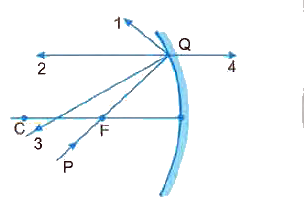
View SolutionAn object viewed directly through a rectangular slan 12 cm thick appears to be raised by 4 cm. The refractive index of the material of slab is ________.
View SolutionA beam of light converges at aoint P. Now a convex lens is placed in the path of the convergent beam at 15 cm from P. At what point does a beam converge if the convex lens has a focal length 10 cm?
View SolutionThe binding energy of 21H is 1.112 MeV per nucleon and an alpha-particle 42He has a binding energy of 7.047 MeV per nucleon. In the fusion reaction 21H+ 21H→ 42He+Q, the energy released is
View SolutionThree photo diodes D1,D2andD3 are made of semiconductors having band gaps of 2.5 eV, 2eV and 3eV respectively. Which of them will not be able to detect light of wavelength 600 nm?
View SolutionA rectangular glass slab ABCD of refractive index n1 is immersed in water of refractive index n2(n1<n2). A ray of light is incident at the surface AB of the slab as shwon. The maximum value of the angle of incidence αmax such that the ray comes out from the other surface CD is given by
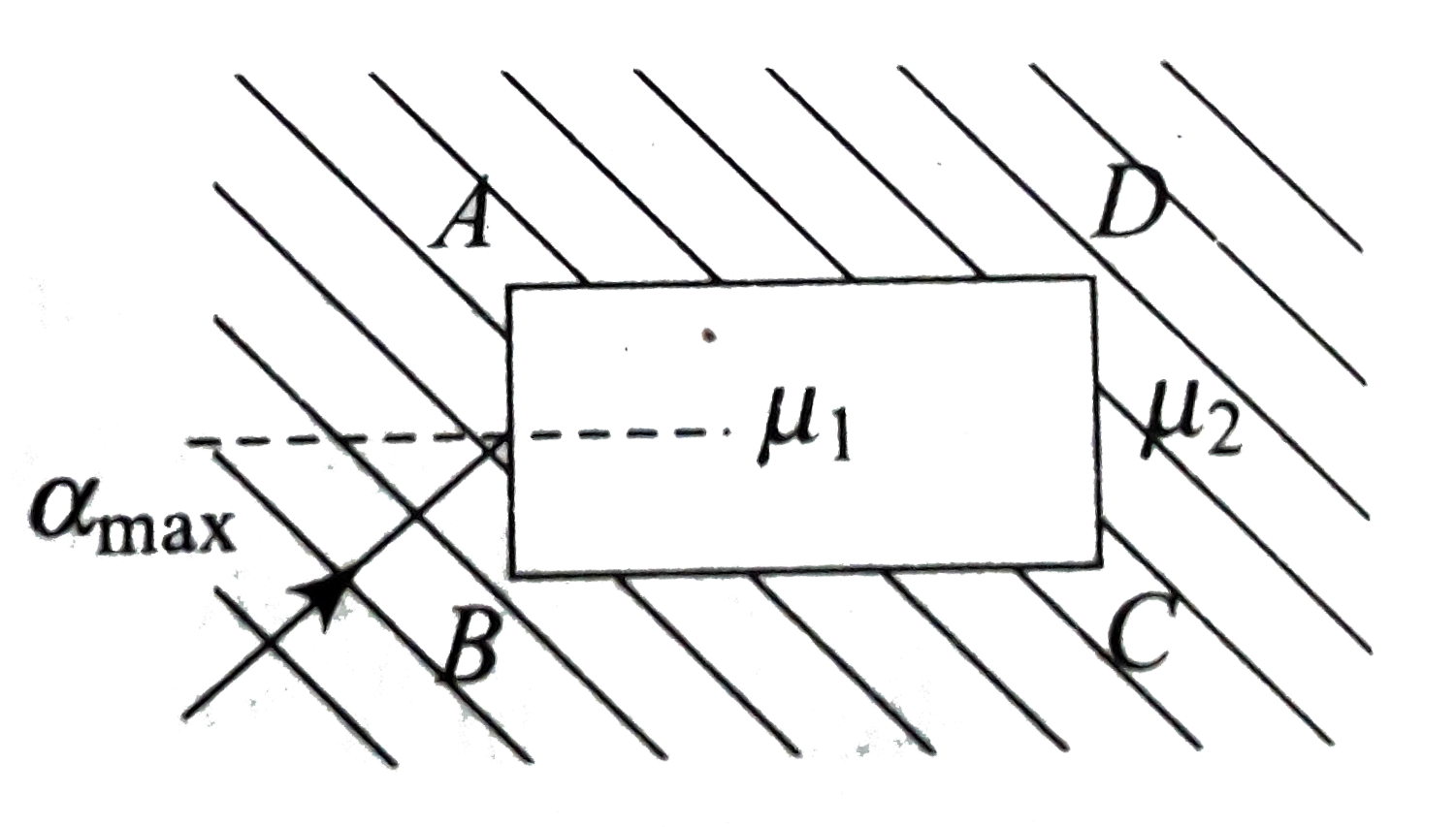
View SolutionA ray of light travels from a medium of refractive index n1 to
a medium of refractive index n2. If angle of incidence is i and
angle of refraction is r, than sinisinr is equal to
View Solutionप्रकाश की एक किरण n1 अपवर्तनांक के एक माध्यम से n2 अपवर्तनांक के दूसरे माध्यम में जाती है। यदि आपतन कोण i है और अपवर्तन कोण r है, तो sinisinr किसके बराबर है?
View Solution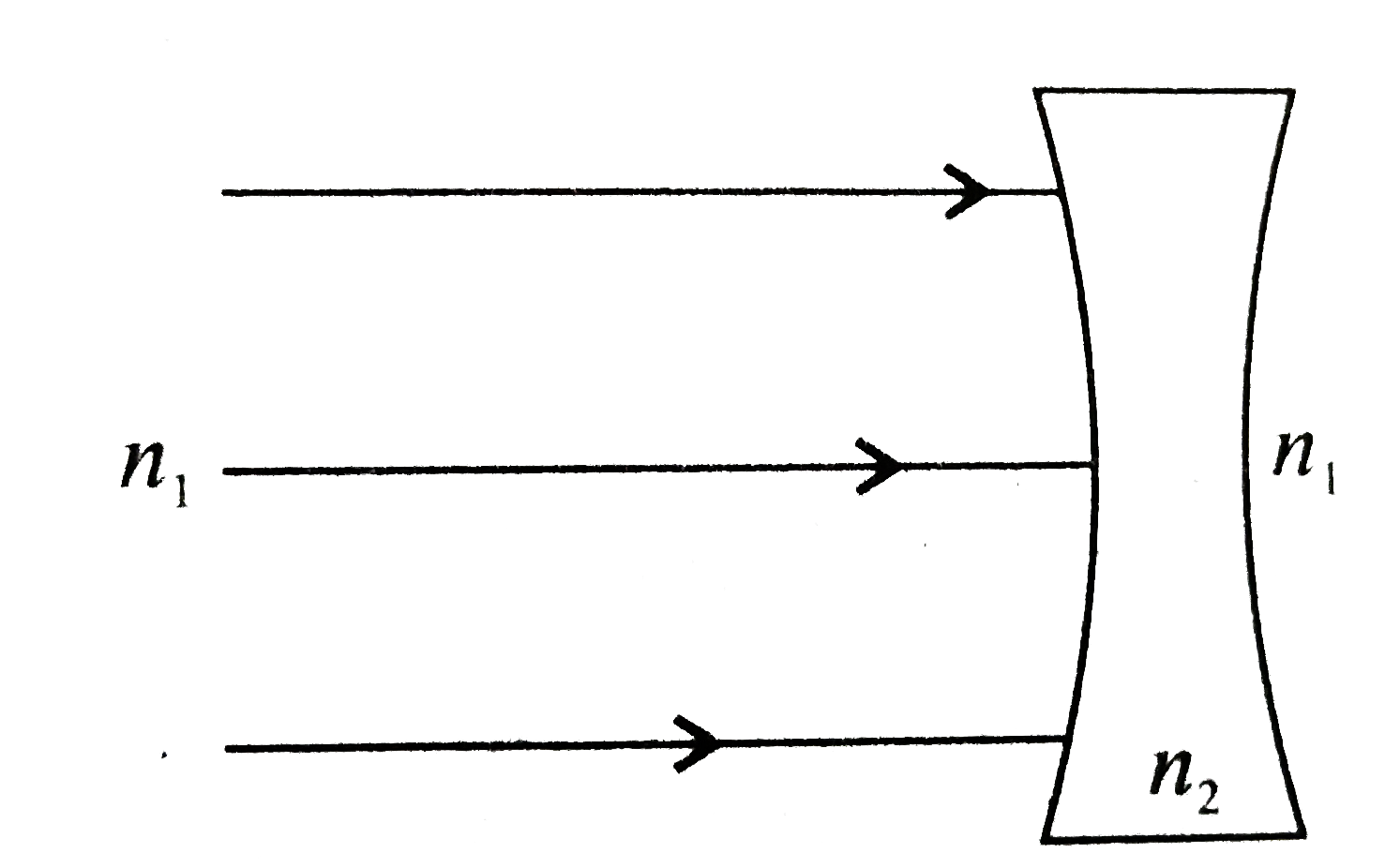
उपयुर्क्त चित्र में लेंस के अपवर्तन के बाद निर्गत किरण का मार्ग बनाइये यदि n1>n2 जहाँ n1 व n2 माध्यम के अपवर्तनांक है।
View Solutionयदि n1 व n2 माध्यम के अपवर्तनांक हो तो n1 व n2 में सबंध बताइये की कौन बड़ा है व उस लेंस की फोकस दुरी पर के प्रभाव पड़ेगा ?
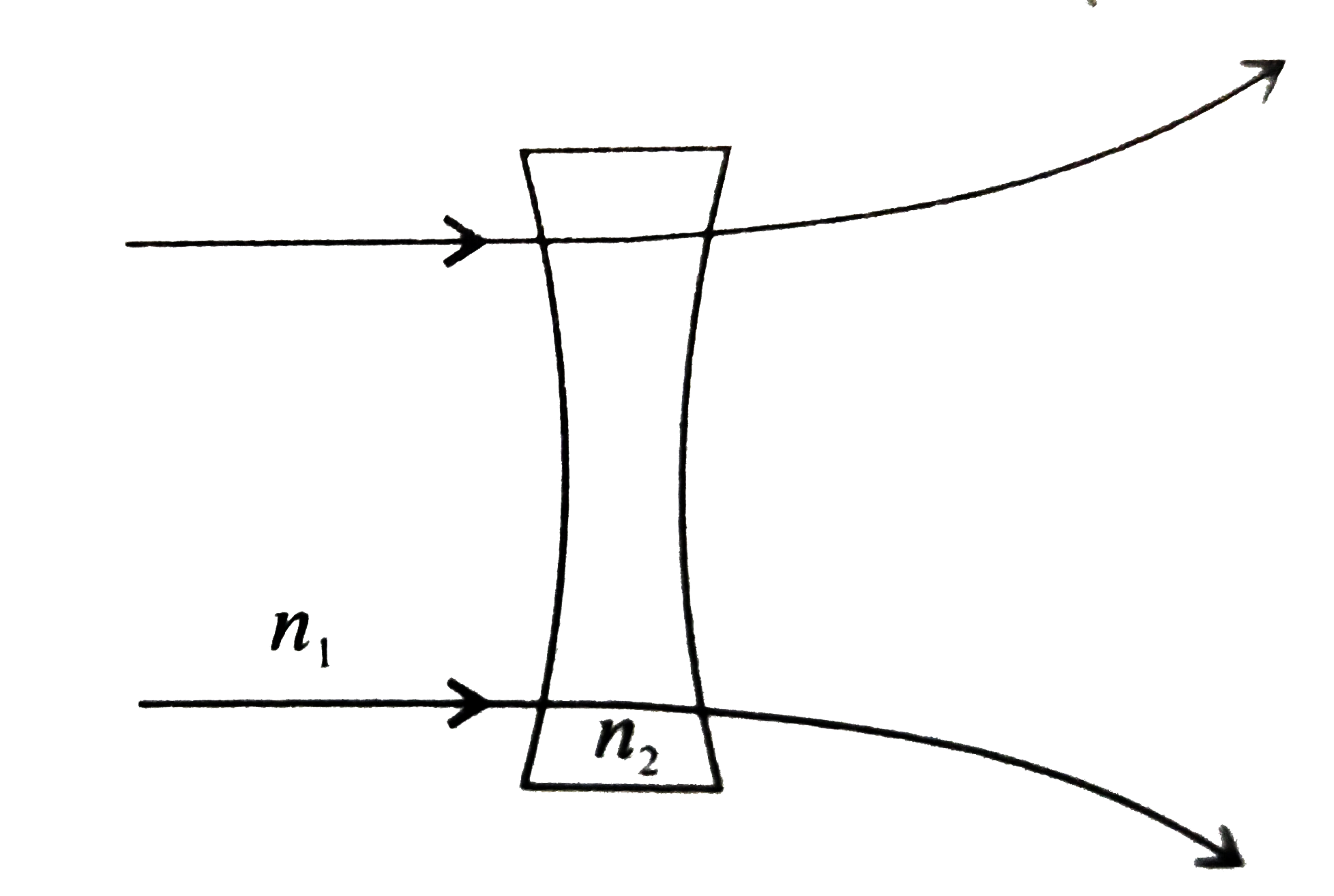
View SolutionThe refractive index 2n1=n1 –––––
View SolutionLight of wavelength λ1 enters a medium with refractive index n2 from a medium with refractive index n1. What is the wavelength of light in second medium ?
View Solutionएक प्रकाश किरण माध्यम (1) से माध्यम (2) में अपवर्तित होती है| इनके अपवर्तनांक क्रमश: n1 तथा n2 है तथा n2<n1 | क्रांतिक आपतन कोण के लिए व्यंजक लिखिए|
View Solutionअपवर्तनांक n1 की एक आयताकार काँच पट्टिका ABCD, अपवर्तनांक n2 के पानी में डुबाई जाती है (n1>n2) | एक प्रकाश किरण पट्टिका के पृष्ठ अब पर आपतित होती है | आपतन कोण का वह अधिकतम मान αmax' जिसके लिए निर्गत किरण दूसरे पृष्ठ CD से बाहर आए, होना चाहिए
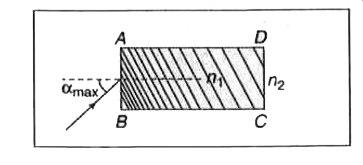
View SolutionA ring angled isosceles prism KLM of refractive index n_(1) is placed inside a rectangular block PQRS of refractive index n_(2) as shown in the adjoining Fig. The rectangular box is surrounded by a medium of refractive index n_(3) . A ray of light AB enters the rectangular block normally. Depending upon the relationships between n_(1), n_(2) and n_(3) . it takes one of the four possible paths. Under what condition the ray follows the path no. 1 (i.e., path ABCI)?
View Solution

